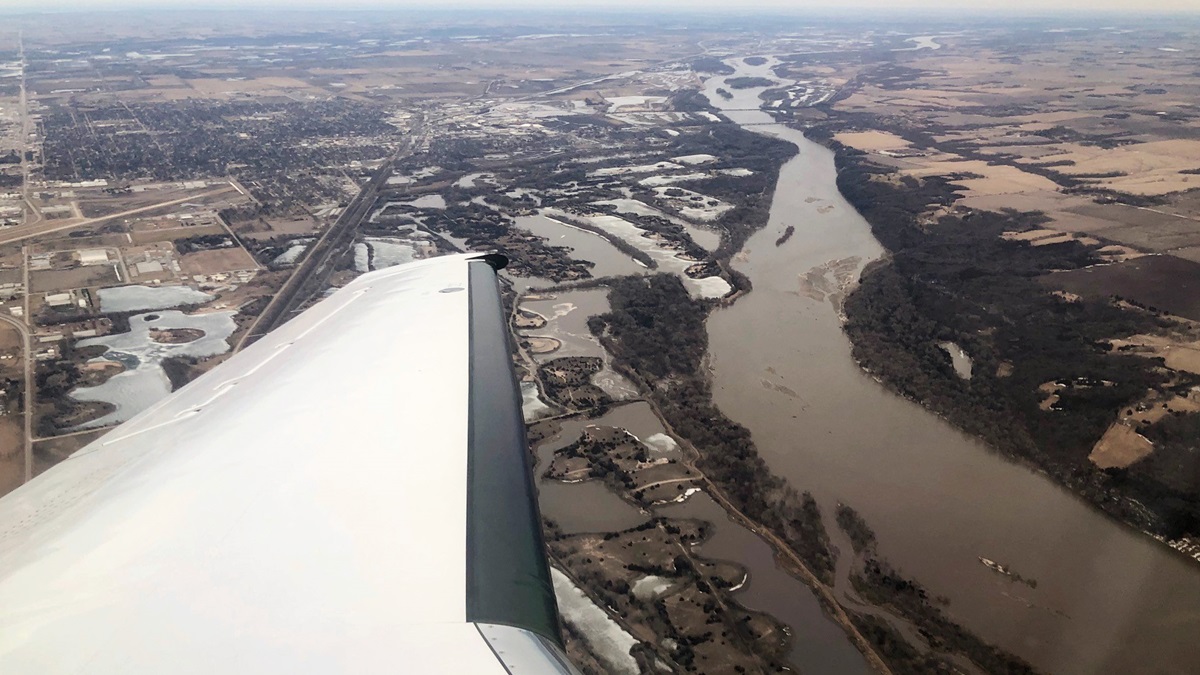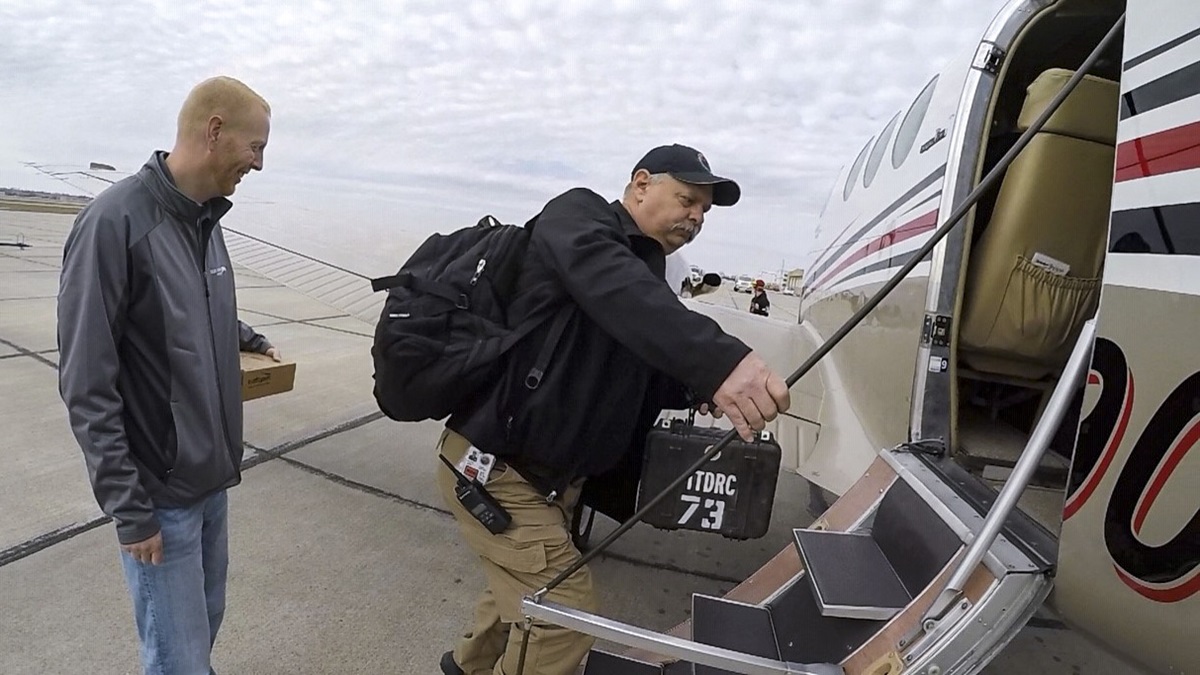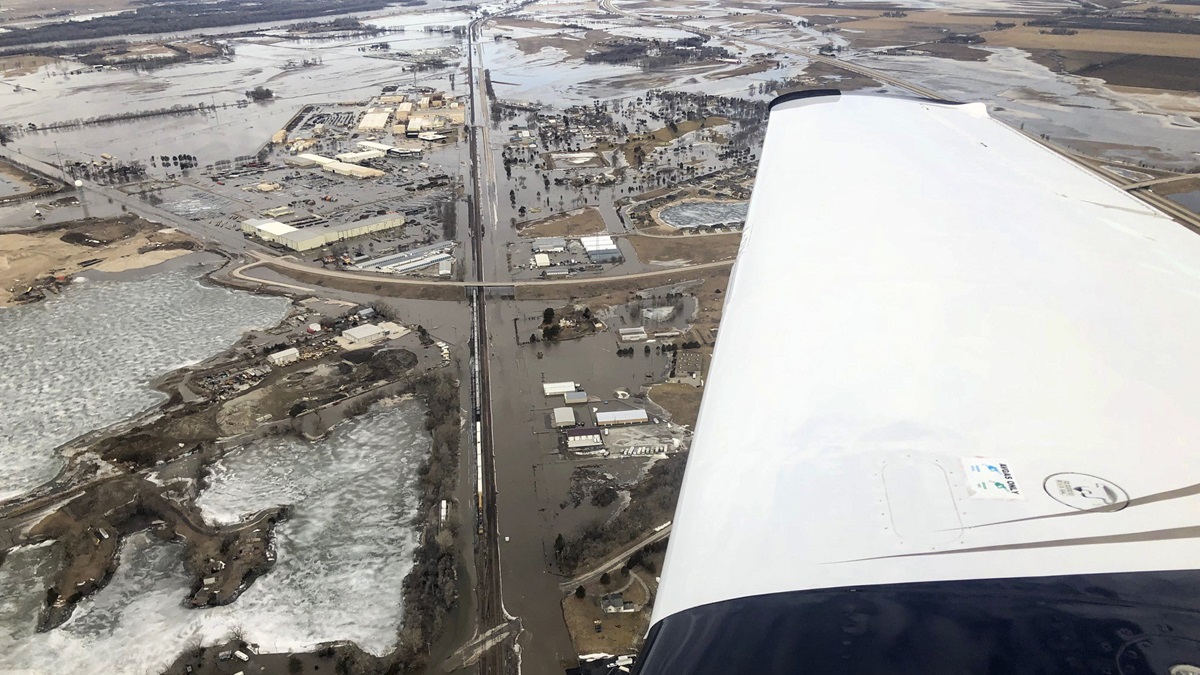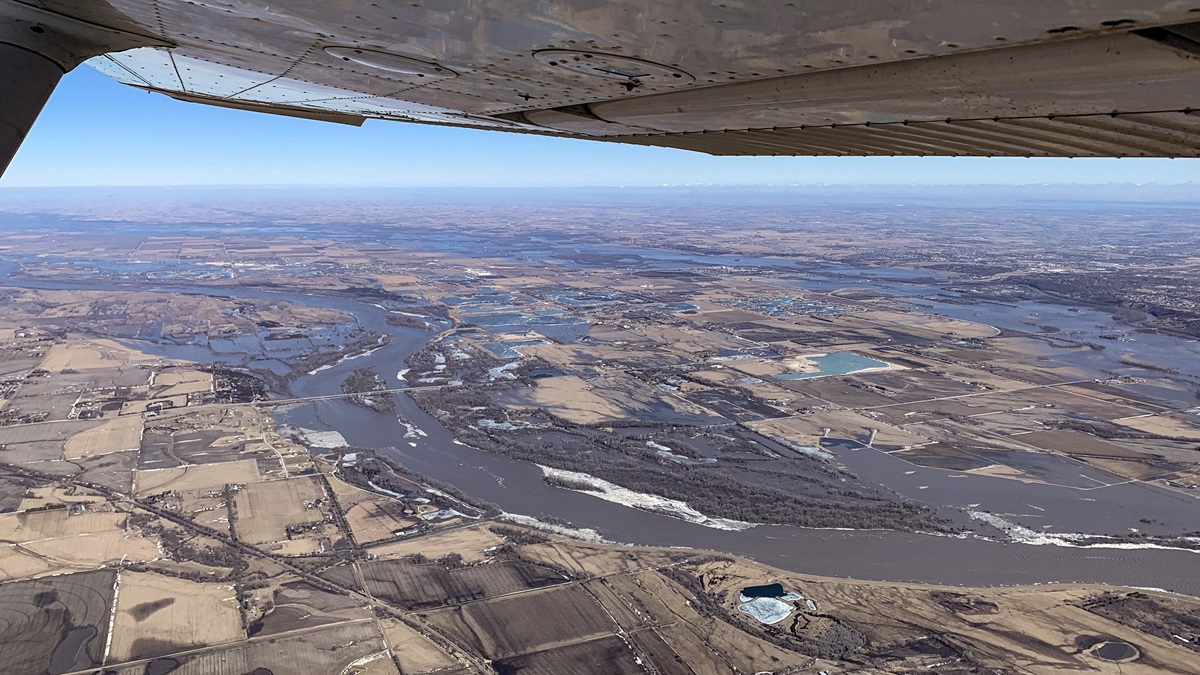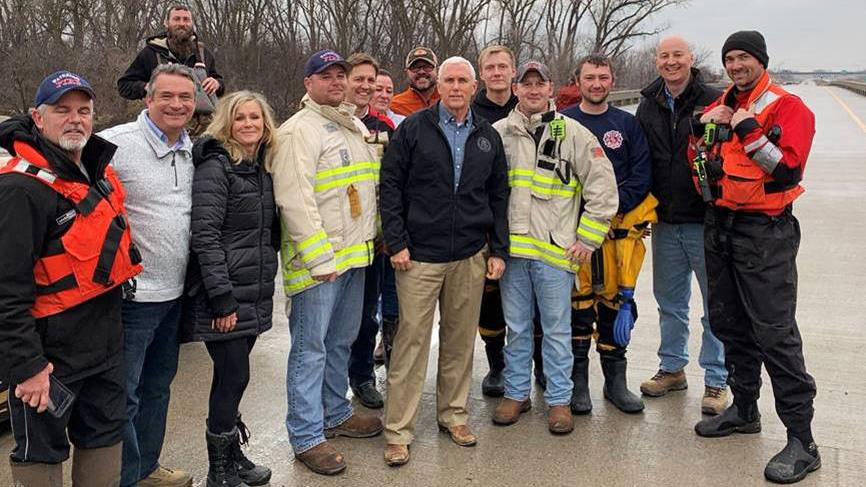GA pilots fly for Midwest flood relief
Aerial views gave communities in Nebraska, Iowa, and elsewhere their first look at the scale of destruction from historic flooding triggered by heavy rains and melting snows as their neighbors downstream braced for high water moving in their direction under clouded skies.
Pilots rushed to respond—and before long their independent efforts coalesced into a major, coordinated operation highlighted by many individual volunteer light-aircraft owners getting airborne and a Lincoln, Nebraska, charter service donating repeated flights to and from a landlocked airport in a Beechcraft King Air twin turboprop.
Those people stranded in Fremont, Nebraska, on the Platte River found their way out, and supplies found their way in on board those aircraft starting March 16 as the emergency response gained critical mass.
Although skies had cleared, the National Weather Service still predicted that the “historic and catastrophic flooding” caused by rain and rapidly melting snow would persist in “portions of the central Plains and Upper Midwest for the rest of the week,” and true to predictions, a weak low pressure system was bringing additional light to moderate rain to the area on March 19. Portions of Nebraska braced for up to an inch of additional rain to fall by the weekend.
The governors of Nebraska, Iowa, and Wisconsin declared states of emergency. Vice President Mike Pence toured the region by helicopter on March 19 and promised timely federal government support.
The flooding brought back memories of a prior deluge for Nebraska Gov. Pete Ricketts.
“In 2011, it took 108 days for water to subside, and this year the water is 4-5 feet higher. NEMA and teams across the state are working around the clock to provide relief,” he tweeted on March 18. On March 19, Ricketts announced submitting an expedited request for federal disaster assistance.
Fremont, hit hard by the flooding, was surrounded by water for several days, thereby becoming the focus of the major general aviation volunteer-driven relief effort as the only landlocked community with an operating airport.
On March 18, an employee of Fremont Aviation had counted 18 airplanes outside the fixed-base operation’s facility at Fremont Municipal Airport, said Greg Kjeldgaard, the FBO’s vice president, in a quick telephone interview he granted amid the frantic activity.
“The ramp’s good for about 10,” he added.
March 18 was the fourth day of air relief and the first day people in Fremont, population about 25,000, had been able to get out of the city by car, he said.
“Supplies were dwindling from baby diapers to water,” he said, adding that “a quarter of the town was evacuated and underwater,” with bridges “wiped out” and “trains stopped here.”
Pilots participated in at least one rescue. As the floods began to submerge the area on March 15, a Black Hawk helicopter crew came to the rescue of firefighters and the rescued occupants of two boats that capsized in raging waters.
Kjeldgaard said his family’s FBO doesn’t offer air charters, so he put out the word that there were many people stranded in town who needed to get out, as well as residents who had been out of town when the disaster struck and wanted to get home.
Advanced Air, in Council Bluffs, Iowa, and Silverhawk Aviation of Lincoln, Nebraska, responded with donated transportation, and many area private pilots also took up the call.
“I guess we’ve done at least a thousand people,” Kjeldgaard said by phone. “We tried keeping track, and we couldn’t.”
News reports said hard-hit Offutt Air Force Base south of Omaha, Nebraska, and Council Bluffs, where the Platte and Missouri rivers come together, was badly flooded with about 60 structures that included the headquarters of the 55th Wing, and aircraft maintenance hangars.
Col. Michael Manion, commander of the 55th Wing, announced that the 2019 Defenders of Freedom Air & Space Show, which had been scheduled for June 1 and 2, has been canceled.
Gary Parker, a Cessna 182 owner who works on the base, said that as the waters rose, personnel responded to the impending threat by working all night March 16 and the following morning filling sandbags—an effort that ultimately proved insufficient.
“We got word about mid-week last week that some of it was going to be very problematic with all the snow we had,” he said. “I don’t think the region was fully prepared for what was coming.”
A U.S. Air Force veteran, Parker earned his private pilot certificate with the aero club on the base in 2006—22 years after his first solo—and now owns a 1961 Cessna 182. He keeps the airplane at Offutt, but as luck would have it, the Skylane was safely in the shop at Advanced Air in Council Bluffs for an avionics and interior upgrade when the waters began to rise.
Ginny Wescott, who works at Offutt Air Force Base and coordinated much of the relief flying, told AOPA she was able to return to her job at the base on March 19.
Down the Midwest’s major rivers, flooding began, and anxious residents kept a wary eye on the waters as the next rainy system moved in. Longtime pilot and AOPA ally Rep. Sam Graves (R-Mo.) said in a March 19 telephone interview that his home airport, Gould Peterson Municipal Airport in Tarkio, Missouri, was above water and “absolutely jam-packed with airplanes, everyone getting their airplanes out” of flooded airports in the region.
“We’ve got airports under water, but we don’t know the extent of the damage yet,” Graves said. “It’s raining today… if it continues to rain here, my home airport’s going to go under.”
Mainstream news coverage helped spread the word that GA was pitching in to help as the magnitude of the big-picture impact of the flooding emerged.
In Iowa, the Des Moines Register, the state's largest paper, reported Gov. Kim Reynolds’ comment that the flooding looked like “an ocean,” after aerial inspections. On March 20, the paper reported that the cost of repairing damaged levees could be in the billions of dollars and published video taken by drone showing that the southwestern part of the state remained "inundated."

